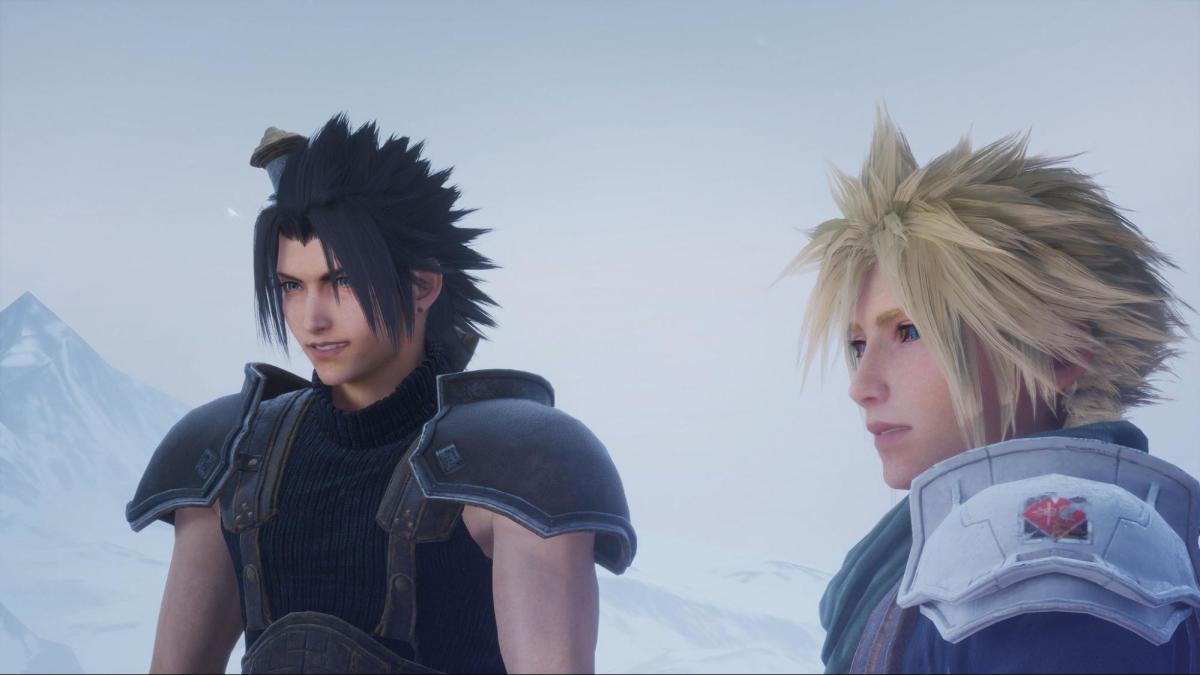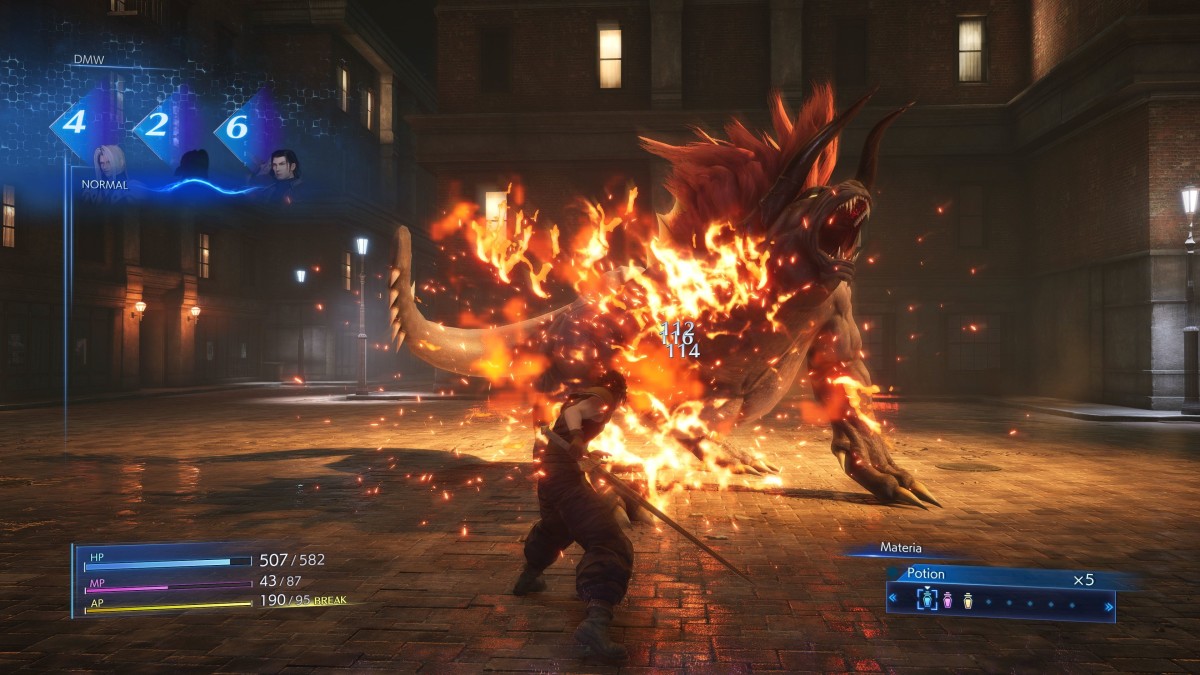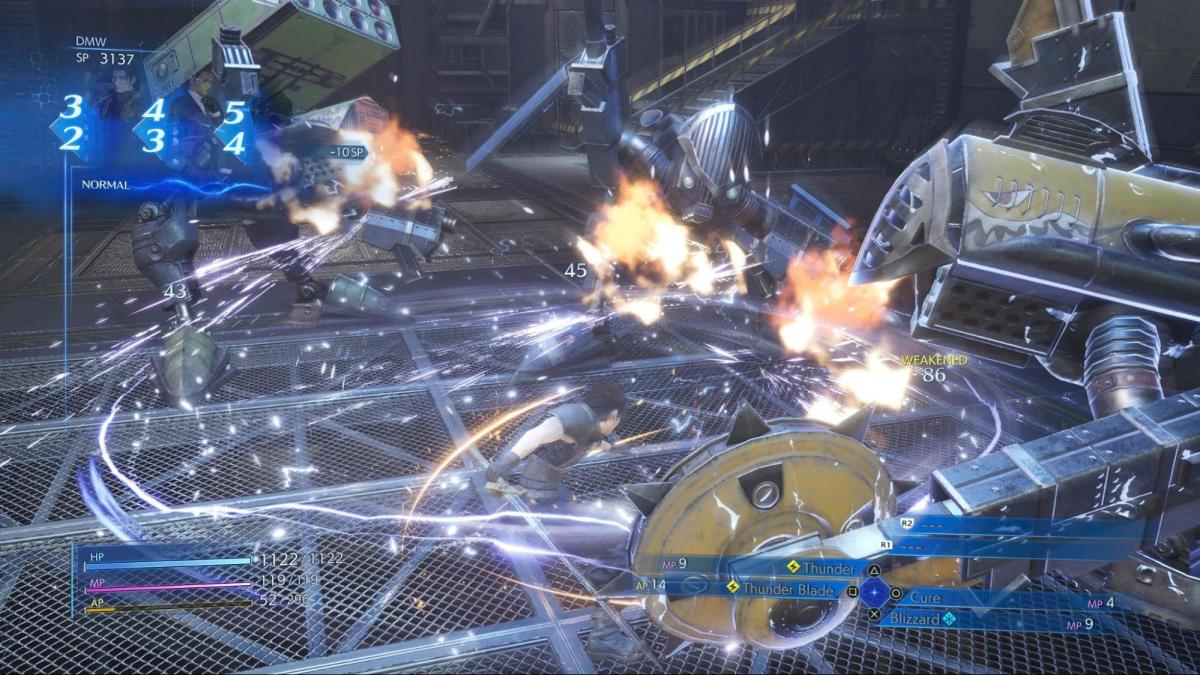Crisis Core: Final Fantasy VII Reunion review - "Bibles and boredom"

JRPG fans are no strangers to a bit of tedium. Whether it’s grinding in the tall grass or waiting for a random battle transition that’s just a few seconds too long, the genre is known for producing games that take days to finish, but it’s always best when it feels like the time is just flying by as you get wrapped up in an unforgettable story. Crisis Core: Final Fantasy VII Reunion is, instead, an indecipherable story, drawn out by optional-but-not missions.
The long routes of Pokémon games are filled with wild monsters and aggressive trainers – it’s essentially a corridor stuffed full of battles to ensure the game isn’t over too fast, but moving down the route gives you a great sense of progress. In Crisis Core, your progress is almost always represented by numbers. What matters here is what chapter you’re on, what percentage of that chapter is complete, how many missions you have available, and the percentage of missions you have completed – it’s the illusion of progress while the game continues to throw battles at you.
Protagonist Zack Fair is a naive yet wholesome member of SOLDIER that just wants to be a helpful hero, and he isn’t given much more depth than that. The Shinra Corporation that operates the SOLDIER program is pretty evil, so naturally, things go wrong, and Zack finds himself wrapped up in that. This is a prequel to Final Fantasy VII, of course, so you’ll need the context of what happens in that game at the very least. Then it’s a case of discovering what, exactly, Sephiroth’s problem is.

Crisis Core’s story is a mess. Zack being an innocent soldier getting wrapped up in less-than-innocent events makes sense, but it’s somewhere between being introduced to clones of Sephiroth’s old friend Genesis and strange quadruped creations that can also fly with a single wing that things start to come apart at the seams. How did we get here? Well, they’re all creations of Shinra scientists like Hojo and Hollander, of course. Why are they running freely around the city almost constantly? Absolutely no idea.
In FF7, Zack is known as Aerith’s late boyfriend, and Cloud’s mentor of sorts. In Crisis Core we interact with each of these characters, but the interactions feel hollow. Zack drops into Aerith’s church, crushing the flowers as he falls. After that, I suppose we just assume that they’re dating or whatever. Story scenes are even locked behind the slot machine-style DMW system in battle – yes, it will literally pause the fight to show you a cutscene depending on your DMW roll, not that these scenes are ever necessary or interesting.

Crisis Core doesn’t deliver on the things that fans want from a prequel, and the flow of the game is as disjointed as the story. Its lineage as a portable game on the PSP is inescapable. Chapters are short and sweet, getting straight to the point more often than not, but just playing chapters isn’t good enough – optional missions should be considered necessary, since level ups are locked behind random rolls. If you need more strength, you’ll be battling just for the chance of getting the level-up roll you need, not specifically for experience. As such, missions are as good as mandatory. They can at least reward some nice magic Materia, but it’s not the same as playing through all of these battles as part of a single comprehensive experience.
Materia and Materia Fusion is present here, and it’s good fun. Fusing Materia to create new, more powerful attacks and abilities is excellent, and if you’re smart about fusions, you can get early access to MP attacks like Thundaga, or AP attacks like Firaga Blade, which means you can get chunky elemental strikes for both of your resource pools. You can also sacrifice an attack slot to equip a Materia with a passive buff instead, such as more HP, MP, AP, or special benefits, like elemental absorption, or extending elemental attacks to your standard sword swings.

If you have played Crisis Core on PSP and didn’t like it, there’s a chance that this remaster will appeal to you more. The visuals have been given a complete and total remaster, with voice acting that feels more modern and professional to go along with it. But the biggest transformation has been given to the battle system, which has been given a necessary spit-shine, making it more accessible and palatable in the modern day. It’s still very simple and obviously made for a handheld system, but manages to be flashy and responsive enough to gloss over the minor complaints.
The old complaints about Crisis Core aren’t suddenly outdated – this is still far from a perfect prequel, but it’s a surprisingly fun game to while away the hours with. Hopping in to just clear through a bunch of missions before progressing through a chapter feels fun, and the cameos and references to the main FF7 cast are guaranteed to put smiles on the faces of fans. Crisis Core: Final Fantasy VII Reunion is far from perfect, but if you’re desperate to immerse yourself in the world of Gaia ahead of Final Fantasy VII: Rebirth, this is the best way to do it.
